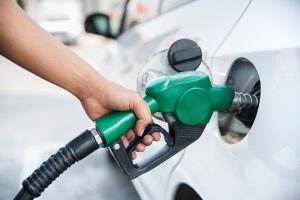Alcoholism is a complex and serious disorder that affects millions of individuals, families, and communities in the United States each year. It is characterized by compulsive drinking, a lack of control over alcohol consumption, physical dependence, and a host of social and psychological implications. While overcoming alcoholism is extremely difficult, it is possible to do so with perseverance, dedication, and appropriate treatments. In this article, we will discuss the various implications of alcoholism and how those who are struggling with this disorder can work to improve their situation.

Sad teenage girl and boy are sitting on the sofa while their parents are fighting because of the father’s problem with alcohol.
The physical implications of alcoholism can be severe and life-threatening. Those who suffer are at risk for a host of physical ailments, including liver disease, stroke, anemia, pancreatitis, coronary heart disease, and many others. In addition, alcohol abuse can lead to long-term damage to the brain and nervous system, potentially compromising cognitive functioning and mental health. Heavy drinkers can also suffer from beer potomania, or the development of severe potassium deficiency due to a lack of vital nutrients in the body. Lastly, those who struggle with alcohol addiction are more likely to be involved in injuries or death due to risky behavior, including driving while intoxicated.
The psychological implications of alcoholism vary greatly, but can still be incredibly impactful. Those who struggle with alcohol addiction may experience intense mood swings, depression, anxiety, and drastically altered decision-making. Over time, alcohol abuse can lead to a breakdown of work performance or personal/interpersonal relationships. Additionally, those with alcoholism often struggle with maintaining healthy boundaries, leading to co-dependency or enabling behavior in their loved ones.
The social implications of alcoholism are also very real and encompass both bad and good effects. Those who suffer from alcoholism may experience poor leadership abilities, absenteeism at work, and general alienation from family and friends. Conversely, some individuals who find sobriety are able to become more involved in their communities, as well as more productive on the job.
Despite these very real implications, those struggling with alcoholism can find strategies to help cope with their addiction. Seeking out those who are in recovery, including Alcoholics Anonymous, can provide the much-needed support and understanding. Nutritional advice, establishing a healthy schedule, exercising regularly, and engaging in hobby activities can also support those trying to manage their disorder. Finally, participating in counseling or psychotherapy can provide essential insight and assistance to those struggling to control their drinking.
Overcoming alcoholism is hard and requires a significant commitment. Those who are struggling with this disorder need to be aware of the very real implications alcohol can have on their physical, psychological, and social health. By understanding the seriousness of their condition and developing strategies to cope with their addiction, those who suffer from alcoholism can begin to make positive changes. With dedication and patience, it is possible to manage alcoholism and improve one’s quality of life.







